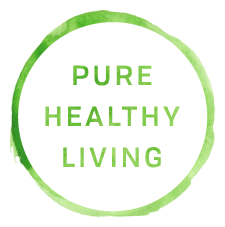Non-Toxic Laundry Detergents and Other Natural Laundry Alternatives That Actually Work
By: Suzanne Kvilhaug
Advertising Disclosure- Our content is free because we earn a commission when you click or make a purchase using our site.
It’s been years now that I’ve been buying laundry detergents that would be categorized as natural and safe. When I started to read more about the ingredients in conventional favorites, it made no sense to keep using these products to “clean” my clothes. Yes, clean is in quotes because the irony of certain ingredients in products designed to clean could make you laugh or make your head spin...or likely both.
Then, a few weeks ago, I spotted a laundry detergent that, although it was made by a mainstream brand, seemed to be a decent choice. Right before I was about to open it and start using it, something told me to do a little more research. And there it was, graded with a D in bright orange on the Environmental Working Group’s website. Gasp! And there I was, back at the store returning this laundry detergent with a reminder to always do the research before buying the product.
Laundry Detergent Toxins Can Be Dangerous For you and Bad for the Planet
Often overlooked, laundry detergent can have a real impact on your health. Our skin is our largest organ and can absorb a lot which means the ingredients in your laundry detergent can make their way through your system. Common health issues that people experience from using the wrong laundry detergent include respiratory problems, skin issues, headaches and congestion resulting from a person’s sensitivities to various due to chemicals and ingredients.
In the most extreme cases some ingredients, like perfumes, can be extremely deceptive. The ingredients in a fragrance can be considered proprietary and remain undisclosed. So all you see is on a label is “fragrance”. It makes that laundry-smell last longer but it may also contain hormone-disrupting chemicals that could be associated with weight gain, lower testosterone, hyperactivity in children and cancers.
Other chemicals, like 1,4-dioxane, are also a problem. 1,4-dioxane isn’t added to a product, but it is an expected contaminant from processes associated with making some products. 1,4-dioxane is also classified by the EPA as an “emerging contaminant” that is “likely a human carcinogen”. But because it’s a byproduct, and not an ingredient, you won’t see it listed on a container. So, you have to look for the ingredients associated with it like sodium laureth sulfate, PEG compounds and chemicals like ceteareth and oleth.
Laundry detergents that contain toxic ingredients aren't just bad for you, they’re bad for the environment. Many detergents are not biodegradable and have ingredients that can contaminate rivers, oceans and water supplies. For example, phosphates that exist in some detergents can build up in waterways and lead to algal blooms that can deprive fish and other plant life of oxygen. Even phosphate-free detergents may come in large plastic jugs. If those containers aren’t recycled, they can contribute to their own share of environmental issues.
From the ingredients in detergents to the packages they come in, the entire clothes-cleaning process can be problematic for your body and the environment. But with a little due diligence, you can be on the lookout for toxic products and focus on finding healthier options.
Laundry Detergent Ingredients to Avoid
There are a number of harmful chemicals that are highly common in laundry detergent products. If you’ve never taken a closer look at the ingredients in your laundry detergent, it’s time to start. If you see any of the following ingredients listed in the products you have at home, or are considering at the store, put them aside and look for a healthier alternative.
Nonylphenol Ethoxylates (Nonoxynol, NPEs)
Sodium Lauryl Sulfate & Sodium Laureth Sulfate/Sodium Lauryl Ether Sulfate (SLS/ SLES)
Dichlorobenzene (P-Dichlorobenzene/Benzene)
Non-toxic laundry detergents
Giving up toxic ingredients doesn’t mean you need to give up clean clothes. There is a growing market for healthier alternatives that are friendlier for your body and the environment. Here are a few great options:
Other Non-toxic Laundry Products
When it comes to cleaning and maintaining our clothes, ingredient issues can arise with more than just laundry detergents. Fabric softeners may be among the most toxic home products. Stain removers that help bring a favorite shirt back from the brink of ruin, may also contain butyl cellosolve or Nonylphenol ethoxylates (NPEs). Even moth balls that help protect stored clothes contain harmful ingredients. Fortunately, there are some healthier choices for those products as well.
Cedar Balls (moth ball replacement)
It’s easy to have the misconception that if a laundry product is labeled natural, it won’t work as well. Untrue! It often works just as well without the long list of potentially negative consequences. Plus, that out-of-the-dryer clean scent is the real deal, not a manufactured mirage. And once you begin washing with laundry detergents that don’t contain all of the harsh ingredients, you can feel the difference.
More Articles You Might Like











It’s hard to keep your house clean between working, raising kids, and maintaining some sort of a social life. But don’t worry! There is a way to speed clean your house! Let’s break it down on how to do it.